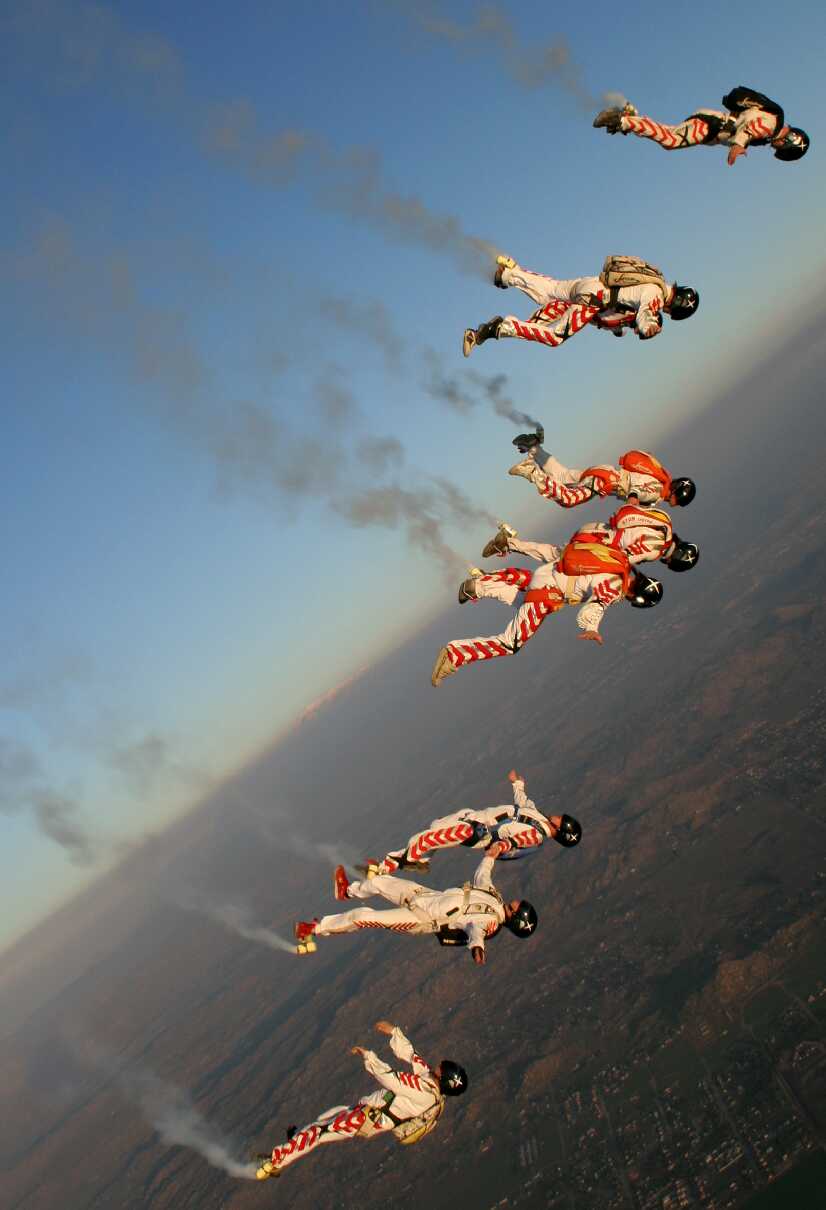Atmonauti is a human flight technique, body free, invented by Marco Tiezzi in 1998. Developed and perfected with the help of Gigliola Borgnis, it was presented for the first time in 2000 at the World Freestyle Competitions, the European Espace Boogie, and the Eloy Freefly Festival.
The technique consists of flying diagonal with a determinate relation between angle and trajectory speed of the body, to obtain an air stream that permits lift and a precise control of flight. The aim is to fly in formation at the same level and angle, and to be able to perform different aerial games, such as freestyle, three-dimensional flight formation with grip, or acrobatic freefly maneuver (see the 'guinnes' page in www.atmonauti.com).
All this is not executed in the normal vertical trajectory of the gravity force. The atmonaut creates his own diagonal trajectory, and thanks to this technique, he regulates with extreme precision all the parameters, such as the angle (trim), speed, and direction, becoming a real 'flight pilot' of his own body.
The term 'Atmonauti' ('atmonauts' in English), coined by Marco Tiezzi, is defined as: Atmosphere Navigators (like 'astronauts', that mean astro=space nauts=navigators), the ideal 'definition' of this new way of fly.
Revolutionizing the concept of skydiving, where all the different disciplines are performed in the vertical fall (the trajectory of the gravity force), Atmonauti fly is a very complex kind of 'relative' work that occurs during a real 'flight'. There is a considerable horizontal displacement, and above all longer flight time. In fact, the Atmonauti fly permits the jumper to remain in the air for a 50% longer time in respect to the vertical free flight, confirming a real 'human fly performance'.

In continuous development and evolution, the Atmonauti fly marked another important step in 2001. Gigliola Borgnis discovered the possibility of flying in the angle trajectory with the feet first instead of head first, realizing something that was considered impossible since then... another revolution that confirms and opens the potential of the Atmonauti fly!

In 2002, Marco Tiezzi invented the "Atmonauti tandem", experimenting with the technique to maintain the same angle and speed of a normal Atmonauti fly, but with double the weight (without drogue of course). The tandem Atmonauti offers the passenger the exceptional possibility of trying a real sensation of flying, instead of falling.

In 2002 Atmonauti became a reality, known and practiced all over the world. The Atmonauti fly also entered into the compulsory of FAI competitions of free style and freefly.
At the end of 2003, the short-film "Atmosphere Navigators", composed of only images in Atmonauti angle fly, won first place in the Flyboyz Film Festival for its unique images and technical contents of the highest level. (The movie is available at www.atmonauti.com.)
And again, in October, 2004, Marco discovered the possibility to fly Atmonauti in the wind tunnel: "Tunnelnauts" = "wind tunnel navigators". That consisted of flying around all the perimeter of the tunnel in a side Atmonauti position.

Gigliola Borgnis and Marco Tiezzi, of Team Atmonauti, will feature another article on the Technique of Atmonauti Fly in the near future. Until then, more information on beginning your "Atmosphere Navigation" can be found on their website at www.atmonauti.com.


There are no comments to display.
Join the conversation
You can post now and register later. If you have an account, sign in now to post with your account.
Note: Your post will require moderator approval before it will be visible.